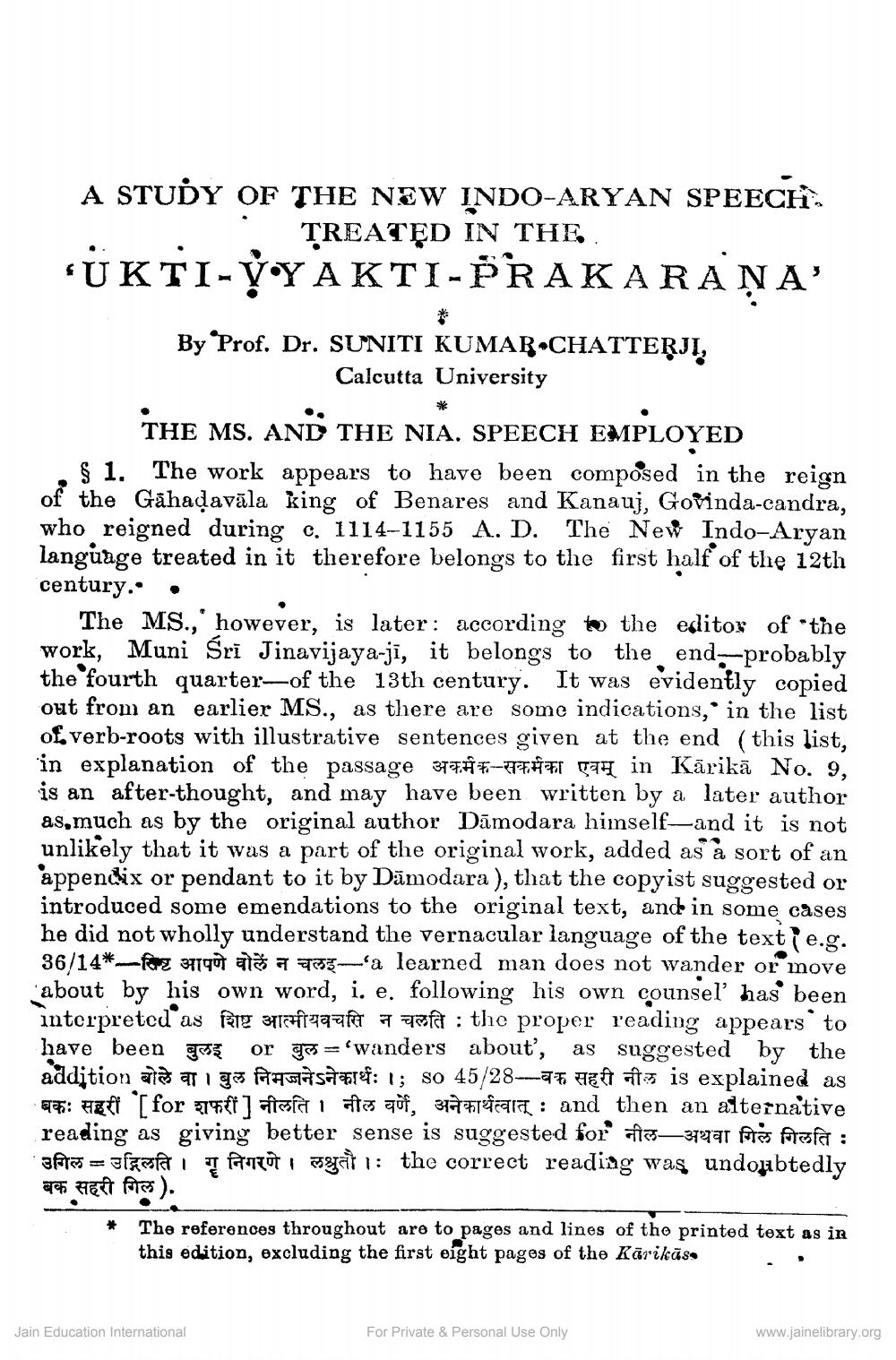________________
A STUDY OF THE NEW INDO-ARYAN SPEECH
TREATED IN THE ÜKTI-ỤY AKTI-PRAKARANA'
By Prof. Dr. SUNITI KUMAR•CHATTERJI,
Calcutta University
THE MS. AND THE NIA. SPEECH EMPLOYED § 1. The work appears to have been composed in the reign of the Gahaļavāla king of Benares and Kanauj, Govinda-candra, who reigned during c. 1114-1155 A. D. The New Indo-Aryan language treated in it therefore belongs to the first half of the 12th century..
The MS.,' however, is later: according to the editor of the work, Muni Sri Jinavijaya-jī, it belongs to the end--probably the fourth quarter--of the 13th century. It was evidently copied
om an earlier MS., as there are some indications, in the list of verb-roots with illustrative sentences given at the 'in explanation of the passage अकर्मक-सकर्मका एवम् in Karika. No. 9. is an after-thought, and may have been written by a later author as, much as by the original author Dāmodara himself—and it is not unlikely that it was a part of the original work, added as a sort of an appendix or pendant to it by Dāmodara), that the copyist suggested or introduced some emendations to the original text, and in some cases he did not wholly understand the vernacular language of the textie.g. 36/14*__fz Tigo al 7 933—'a learned man does not wander or move about by his own word, i. e. following his own counsel has been interpreted as faTy 3141997fe7afa : the proper reading appears to have been glass or gas ='wanders about, as suggested by the addition ala ari ga AHSASA Tef: 1; so 45/287 Ach is explained as 27: Arfi [for ] isa i fos auf, 31. Fortela : and then an alternative reading as giving better sense is suggested for 15—372741 fotos Arafat : Sfata = sfat i į arcot I wait 1: the correct reading was undoubtedly 25 a RTS ).
The references throughout are to pages and lines of the printed text as in this edition, excluding the first eight pages of the Kārikās.
Jain Education International
For Private & Personal Use Only
www.jainelibrary.org




